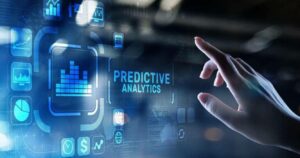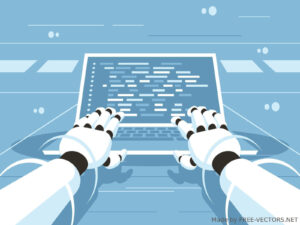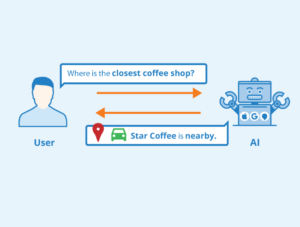Top 10 Disruptive Technologies That You Should Know

Disruptive technologies displace existing market players, create new markets, or change the way things were getting done.
Disruptive technology is usually the product of business innovation from startups and is often not revolutionary or a direct commercial success. However, it can change the dynamics of existing markets by either starting from the low-end segment or creating entirely new markets overlooked by existing incumbents.
Disruptive technologies eventually squeeze the incumbents into a tight corner of loyal, premium customers or wipe them off the market entirely. This is because technology is in constant evolution and creating superior solutions and new opportunities.
This blog post looks at the top 10 disruptive technologies and how they may affect the future.
Top 10 Disruptive Technologies
Here are the must-know disruptive technologies that you should know:
1. Robotics & Automation
Robots are disrupting a wide range of industries. While the standard picture of a robot that comes to mind is a humanoid with a steel frame and camera eyes, robots are in fact, very versatile.
Consider Googlebot, the relentless web crawler that reads all documents on the web. Then, the thousands of bots on Instagram, Telegram, and on Twitter that perform one function or the other. Then, there are chatbots for e-commerce websites, accounting bots, and so on. The bot services market is predicted to hit $7.8 billion by 2030.
Those are software bots though, the global robotic industry was valued at $27 billion in 2020 and growing. Hardware bots are equally disrupting markets from welding to electronics assembly, bomb disposal, mining, warehousing, smart greenhouses, elderly care, robot-assisted surgery, restaurant service, and sexual companionship.
Robots can easily automate simple tasks at a lower cost and higher efficiency, however, their adoption is hampered by high development costs, which translate into high upfront costs for business owners. But as prices are bound to fall with time, adoption rates will skyrocket.
Another important factor in the development of robotics and automation is energy. While cloud computing makes it easy to launch powerful software bots backed by AI, mechanical bots are still relatively limited by their computing power and energy storage capacities.
2. Augmented Reality
Most people can do work while listening to the radio, but it is difficult – if not impossible – to accomplish certain tasks while looking elsewhere. AR or Augmented Reality solves this problem by providing the needed information as part of the worker’s visual scope.
Augmented smart glasses can help airport employees scan baggage QR codes, display package information for logistics workers, improve service from flight attendants, medical training, product modeling, and design, etc.
Furthermore, augmented reality is not restricted to glasses. As location-based apps such as Google-maps have proven, smartphone apps can feature AR to deliver improved experiences for tourists, museum visits, and similar events.
Augmented Reality is also gaining traction in retail shopping. Customers can try out new makeup and fashion products, see how new IKEA furniture can fit into a new room, point your phone at your feet and it shows you your Nike shoe size, and so on.
3. IoT & Smart Devices
The Internet of Things or IoT is simply a network of inter-connected digital devices, often working wirelessly. They can communicate with one another, exchange data, include sensors, and even include varying levels of processing power.
IoT devices are making it possible to develop smart buildings, street lights, smart cities, smart shops, and so on. They are also helping in logistics innovation to know where each item is, inventory management in restaurants and hotels, smart manufacturing, and smart farming, where IoTs monitor temperature, humidity, soil PH, and so on.
One unique feature of IoT networks is that you do not necessarily need a central server. For instance, a humidity sensor in a warehouse could issue an alert if it senses too much atmospheric moisture or a soil sensor that senses too little water. Then, the responsible device for watering the soil or dehumidifying the warehouse can simply switch on and do its job.
4. Cloud & Edge Computing
Years ago, serious companies either had to build their server rack in-house or rent a server on the Internet. But both approaches usually came with headaches, such as resource management and scaling issues.
Cloud computing solves that problem by making it easy to rent computing resources that can automatically scale to accommodate your workloads. So, instead of paying for a physical server, you only pay for the resources you consume, freeing up time and funds for more productivity.
To further make them affordable, cloud infrastructures are often located in specific regions, making them physically far away from many users. This brings latency and bandwidth issues, but edge computing addresses them.
Edge computing is a type of cloud computing, where the compute and storage resources are located closer to the user – the Edge. It offers most of the advantages of cloud computing while maintaining low latency and minimizing networking costs. This leads to better software products.
5. Drones & Autonomous Vehicles
Drones or UAVs (Unmanned Aerial Vehicles) are a type of autonomous vehicle. From the Turkish Bayrakter to the Russian Orlan-10, American Switchblade, Iranian Shahed, Zala, Orion, and dozens of others in the Ukraine war, including many off-the-shelf models, it is clear that drones have changed the face of warfare forever.
Other possibilities beyond the theaters of war include autonomous road and air taxis, delivery drones, and autonomous trucks for highway freight.
Autonomous vehicles combine robotics with artificial intelligence and the Internet of Things to create a disruptive technology that continues to evolve. Their advantages include precision, improved safety, longer operating times, more extensive analysis of the environment, and better coordination with other systems.
For downsides, they can get captured and hacked, AI algorithms also have their limits, especially with self-driving cars, and higher upfront costs can be a barrier for specific implementations.
6. Blockchain
The Blockchain has its roots in Bitcoin, yet it is not limited to cryptocurrencies. By providing the ability to handle reliable transactions in a trustless environment, Blockchain technology has opened a wide range of possibilities for future applications.
From supply chain management to cybersecurity, healthcare, governance, and investments, there are plenty of potentially disruptive applications of the technology.
As already demonstrated by Bitcoin and countless other crypto coins, the Blockchain is unparalleled in securing networks from large-scale invasions due to its block-chaining and distributed ledger approach.
For governance, the Blockchain presents the perfect technology to minimize voter fraud, keep government spending transparent, and keep governments accountable overall.
Real-world investments also become easier with Blockchain technologies, such as asset tokenization. The tokenization process makes it possible to break down larger assets such as real estate and vintage wines into smaller assets backed by crypto tokens, where each holder has full ownership and sale rights of the token.
Read: Blockchain: Advantages, disadvantages & all details
7. 3D Printing
With a roughly $15 billion market size in 2021, which is estimated to exceed $100 billion by 2030, 3D printing is an innovative technology that is disrupting the manufacturing industry and beyond.
Many companies originally used 3D printers for creating product samples before the final production run, but 3D printing itself is slowly developing into a final production method.
Thanks to their additive production nature, 3D printers are perfect for manufacturing customized products from prosthetic parts to human tissues, 3D-printed homes, car parts, weapons, and fashion items.
Manufacturing is a $12 trillion industry, and the ability of the automated production of customized products is what makes 3D printers very disruptive.
8. Artificial Intelligence
AI or Artificial Intelligence is the area of computer science that deals with the creation of systems that can perform tasks that would normally require human intelligence.
There are many methods for artificial intelligence. From neural networks that try to mimic the human brain to simulated annealing, evolutionary algorithms, fuzzy logic, colony optimization, and so on.
Most current research and development, however, are focused on machine learning, NLP (Natural Language Processing) for human-computer interface development, and machine vision for navigation and automated analysis.
AI is changing many fields, including business applications, the healthcare industry, education, the automotive industry, military research, manufacturing, computer games, navigation, security, and so many more.
Also read: Artificial Intelligence: Advantages, Disadvantages & The Future
9. Big Data & Predictive Analysis
Computers and computer users produce huge amounts of data each day – currently estimated at exabytes (1 million terabytes or 1 billion gigabytes) daily. This is big data and the best way to mine information from it is with machines.
Predictive analysis is a data analytics method that employs models to find patterns in current and historic data for making future predictions.
Businesses are employing predictive analysis on big data to identify overlooked or underserved markets, identify industry trends, demographics, churn rate, customer response, and so on. This information then helps them to optimize their services, offerings, and overall business strategies.
10. XaaS “Everything as a Service” Business Model
You must have noticed this one as well, everything is now being offered as a service. From image editing programs to cloud computing, CRM platforms, and even jet engines for commercial airlines, the XaaS business model is changing the face of business in many industries.
Popular XaaS business models include IaaS (Infrastructure as a Service), SaaS (Software as a Service), and PaaS (Platform as a Service).
It helps companies to develop a recurrent revenue stream while maintaining loyal customers. And in turn, the companies can employ usage data from these customers to improve the product and deliver better value, leading to a win-win for everybody.
Conclusion
We have come to the end of this list of the top disruptive technologies and you have seen all the innovations out there and how they are helping to shape the future.
Change is the only constant in life – and business. So, if you are a business owner, then you better pay attention to these technologies. Or quickly adopt the ones that matter to your organization.





